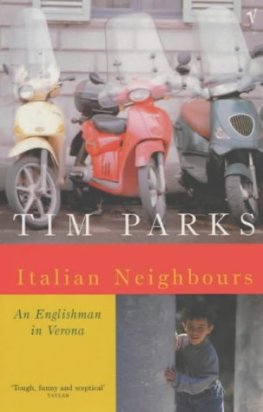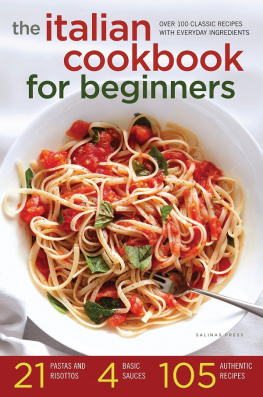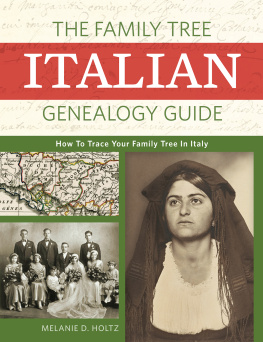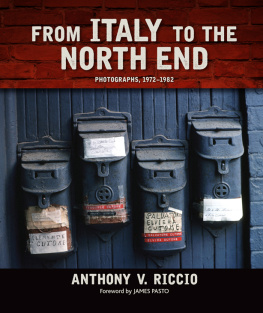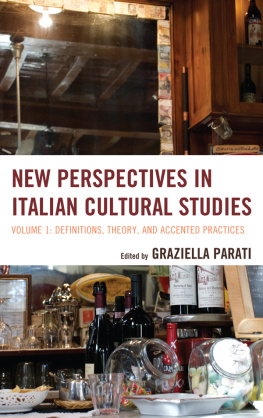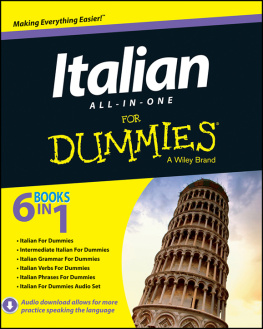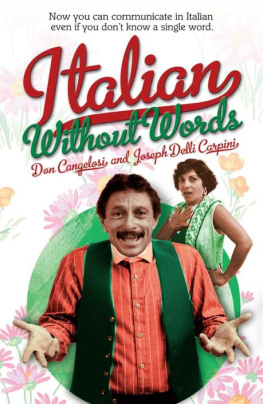New Italian Migrations to the United States
VOLUME 2
New Italian Migrations
to the United States,
Volume 2
Art and Culture since 1945
EDITED BY LAURA E. RUBERTO
AND JOSEPH SCIORRA
Afterword by Anthony Julian Tamburri
2017 by the Board of Trustees
of the University of Illinois
All rights reserved
Library of Congress Cataloging-in-Publication Data
Names: Ruberto, Laura E., editor. | Sciorra, Joseph, editor.
Title: New Italian migrations to the United States / edited by Laura Ruberto, Joseph Sciorra.
Description: Urbana : University of Illinois Press, 2017. | Includes bibliographical references and index.
Identifiers: LCCN 2016050442 (print) | LCCN 2016044847 (ebook) | ISBN 9780252041396 (v. : hardback) | ISBN 9780252082917 (v. 2: pbk.) | ISBN 9780252099991 (ebook)
Subjects: LCSH : Italian AmericansHistory20th century. | ImmigrantsUnited StatesHistory20th century. | United StatesEmigration and immigrationHistory20th century. | ItalyEmigration and immigrationHistory20th century. | United StatesHistory1945 | BISAC: SOCIAL SCIENCE / Emigration & Immigration. | SOCIAL SCIENCE / Ethnic Studies / General. | HISTORY / United States / 20th Century.
Classification: LCC H 184. I 8 N 49 2017 (ebook) | LCC E 184. I 8 (print) | DDC 973/.0451dc23
LC record available at https://lccn.loc.gov/2016050442
Cover illustration: The Towers by Lucio Zago. Courtesy of the artist.
To all those fictional Italians who have been immigrating to the United States since 1945Carmine Fogliatella, Lucia Lombardo, the Vincente family, and even little Topo Gigioand to the exciting new worlds they create, a reconfigured Italian American imaginarium.
| Tutta questa micrazione come si spieca? | So how do you explain all this migration? |
| Si spieca, si spieca. | Its easy, its easy. |
Il Sud nu paese bellu assaj (Qua si campa daria) (1974), Otello Profazio
Someones cousin from the Old Country was always just arriving, and hed have to spend the better part of an hour listlessly nodding to the tale of his voyage and the wide-eyed impressions of America.
The Saint of Lost Things (2005), Christopher Castellani
Contents
Laura E. Ruberto and Joseph Sciorra
Joseph Sciorra
Laura E. Ruberto
John Allan Cicala
Incoronata (Nadia) Inserra
Simone Cinotto
Teresa Fiore
Anthony Julian Tamburri
Acknowledgments
The material in this volume was originally intended to be combined within fact, published together withthe material from New Italian Migrations to the United States, Volume 1: Politics and History since 1945. The complexities of academic publishing ultimately separated the material into two distinct but interconnected volumes divided by disciplinary concerns. That the University of Illinois Press recognized the importance of this topic for not one but two volumes released within months of each other illustrates the degree of scholarly lacuna on the subject. We are grateful to all those at the press who made this volume possible, including Laurie Matheson, Nancy Albright, Jennifer Clark, Roger Kevin Cunningham, Dustin Hubbart, Julie R. Laut, and Michael D. Roux.
This volumes contributors have been extremely patient with our efforts to bring their important work to print, and we thank them for believing in our ability to do so. We are grateful for their committed research and the powerful and insightful articles they wrote for this project.
A number of colleagues helped us complete this second volume over the course of just a few months. John Gennari, Sin Gibby, Edvige Giunta, and Anthony Julian Tamburri read an early draft of our introduction and offered astute observations that helped us refine our thoughts and present our ideas to a broader audience. We thank Sin for copy editing the manuscript, Rosangela Briscese for working on the index, Lisa Cicchetti for helping us conceptualize the cover, and Stephanie Romeo for helping us with images. We are incredibly thankful to Lucio Zago for use of a panel from his 2017 graphic novel Williamsburg Shorts. We are grateful to Robert Oppedisano, who made useful suggestions when we stumbled over a tricky issue concerning the titles of the two volumes, and to Daniel Clowes for putting us in contact with cartoonist Ivan Brunetti.
Agreeing to collaborate on a project of this size takes an enormous leap of faith. So many variables are involved, so many outcomes possible. We are thankful for the good fortune of having worked together. Bringing this work to fruition over the past eight years was the result of tapping the strengths of our respective scholarly perspectives on behalf of this challenging endeavor.
While this book was conceived and produced within a matter of months, the bulk of the research and intellectual thought about the material has been an ongoing dialogue of many years. That conversation happened in both real and virtual spaces, between ourselves and dozens of colleagues, friends, acquaintances, and strangers whom we properly recognized by name in New Italian Migrations to the United States: Volume 1 but to whom here we offer our simple but humble thanks.
New Italian Migrations to the United States VOLUME 2
Introduction
Rebooting Italian America
LAURA E. RUBERTO AND JOSEPH SCIORRA
Early in Mario Puzos The Godfather, the baker Nazorine visits Vito Corleone in the Dons office to ask for a favor. It is August 1945, and World War II has been over in Europe since May. In this scene, part of an iconic sequence from the Francis Ford Coppola film adaptation, Nazorine recounts his daughters relationship with an Italian prisoner of war, Enzo Aguello, held in the United States. The two have fallen in love, Nazorine tells the Don, and now that the war is over the Italian soldier will be repatriated. Nazorine wants him to stay in the United States and marry his daughter. As with other requests, the Don confidently suggests a plan to help Enzo: pay a congressman to propose a special bill that would allow Enzo to become a citizen (Puzo 1969, 18). The Don also concludes that Enzos case is not unique: I think there might be many such cases now that the war is over; we should have extra people in Washington that can handle the overflow and not raise the price, he explains to his consigliere, Tom Hagen (ibid., 19).
Later, Enzo has an opportunity to return the Dons favor, when Virgil Sollozzos men come to kill the Don at the hospital. Puzo again references Enzos recent immigrant status, connecting it to his loyalty to the Corleone family: Don Michael, do you remember me? Enzo, the bakers helper your father saved my life by getting the government to let me stay in America (ibid., 117). The decorated war veteran, Michael, is sympathetic to Enzos precarious official status. He understands that if the police were to get involved it might mean being deported or refusal of citizenship for Enzo (ibid., 118).
These and other references to Enzo throughout the Puzo-Coppola oeuvre illustrate the authors and filmmakers knowledge of some of the lesser-known histories of the Italian diaspora. These references also highlight one of the In fact, many cultural works have documented the ongoing movement of Italians from their homes and to the United States.


